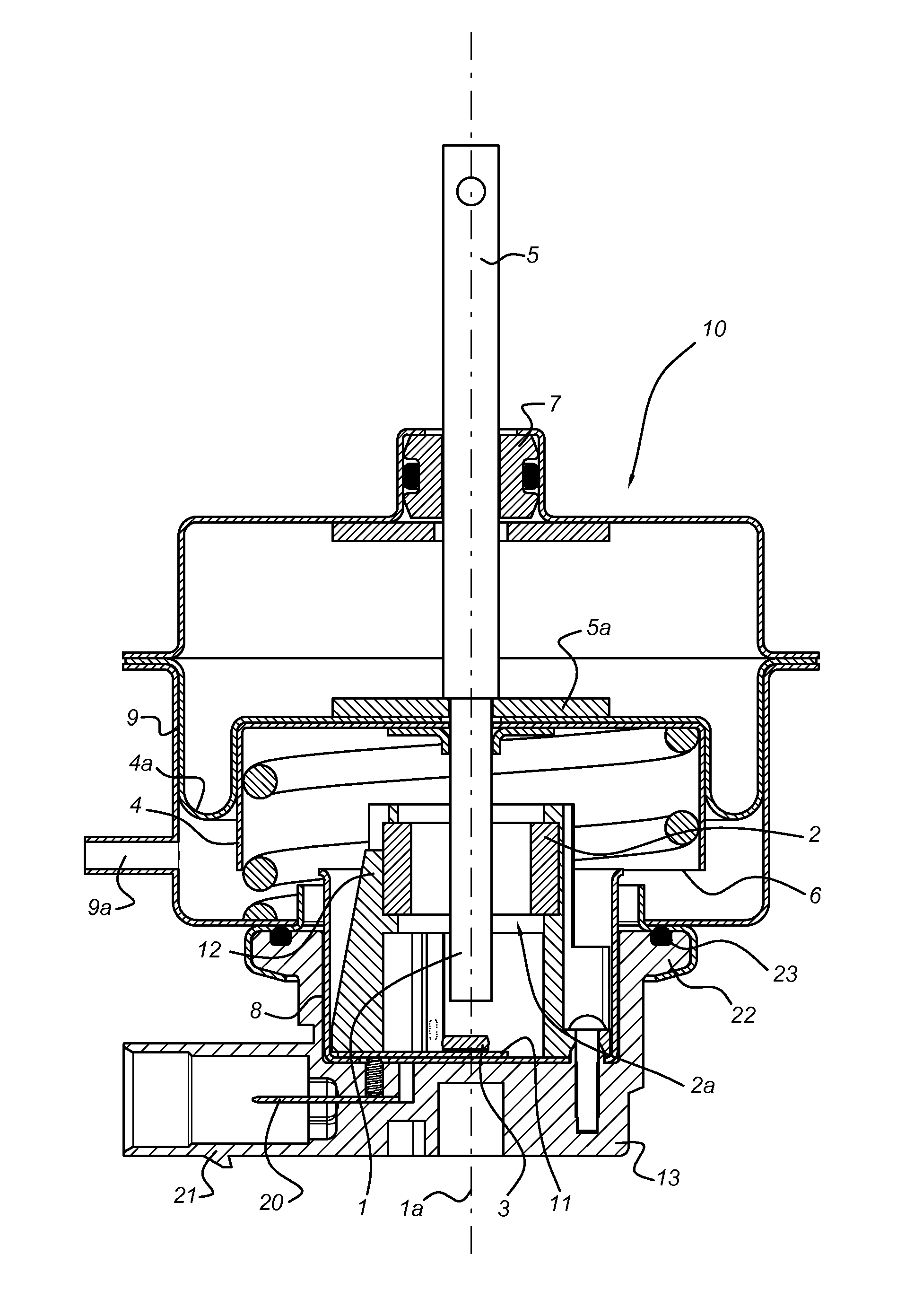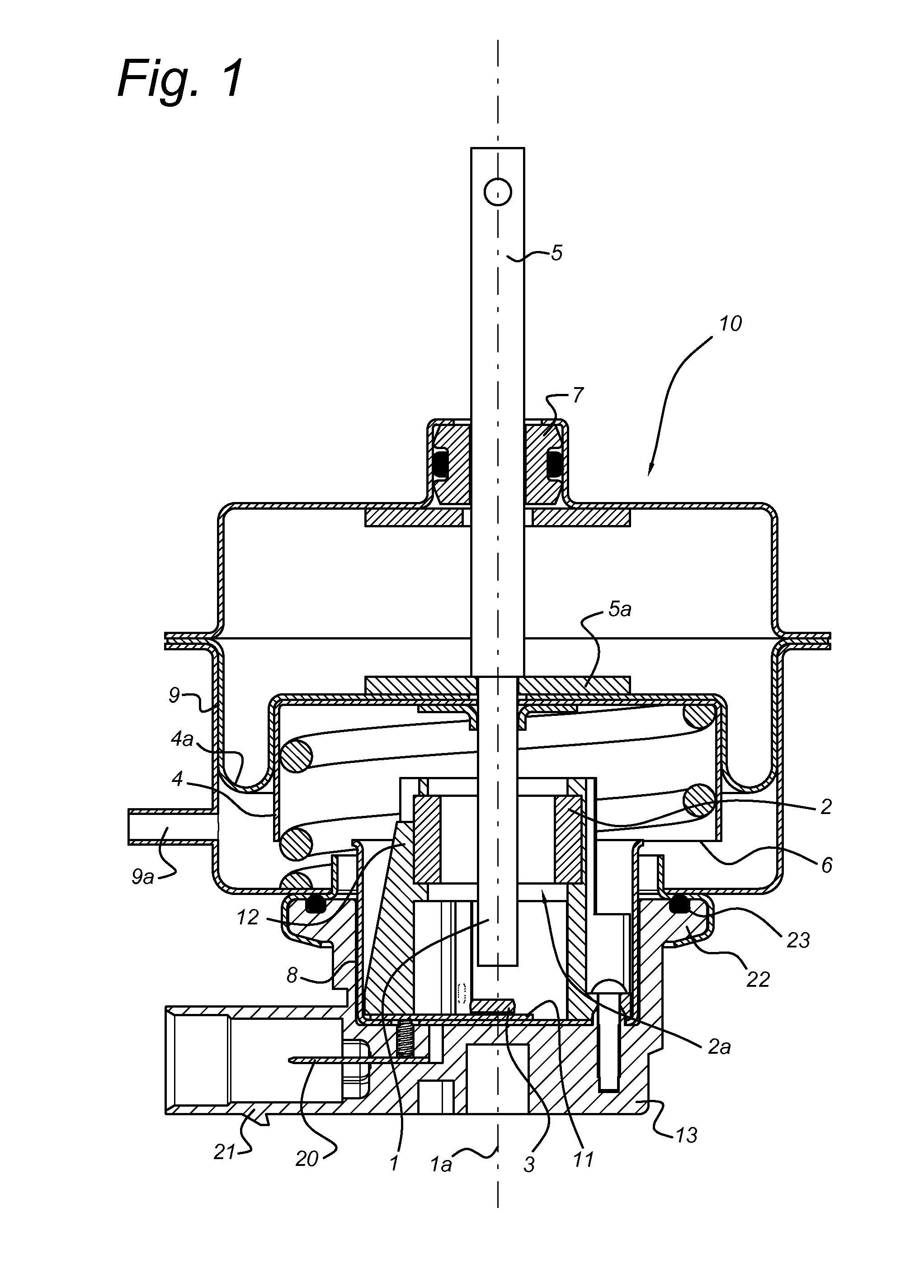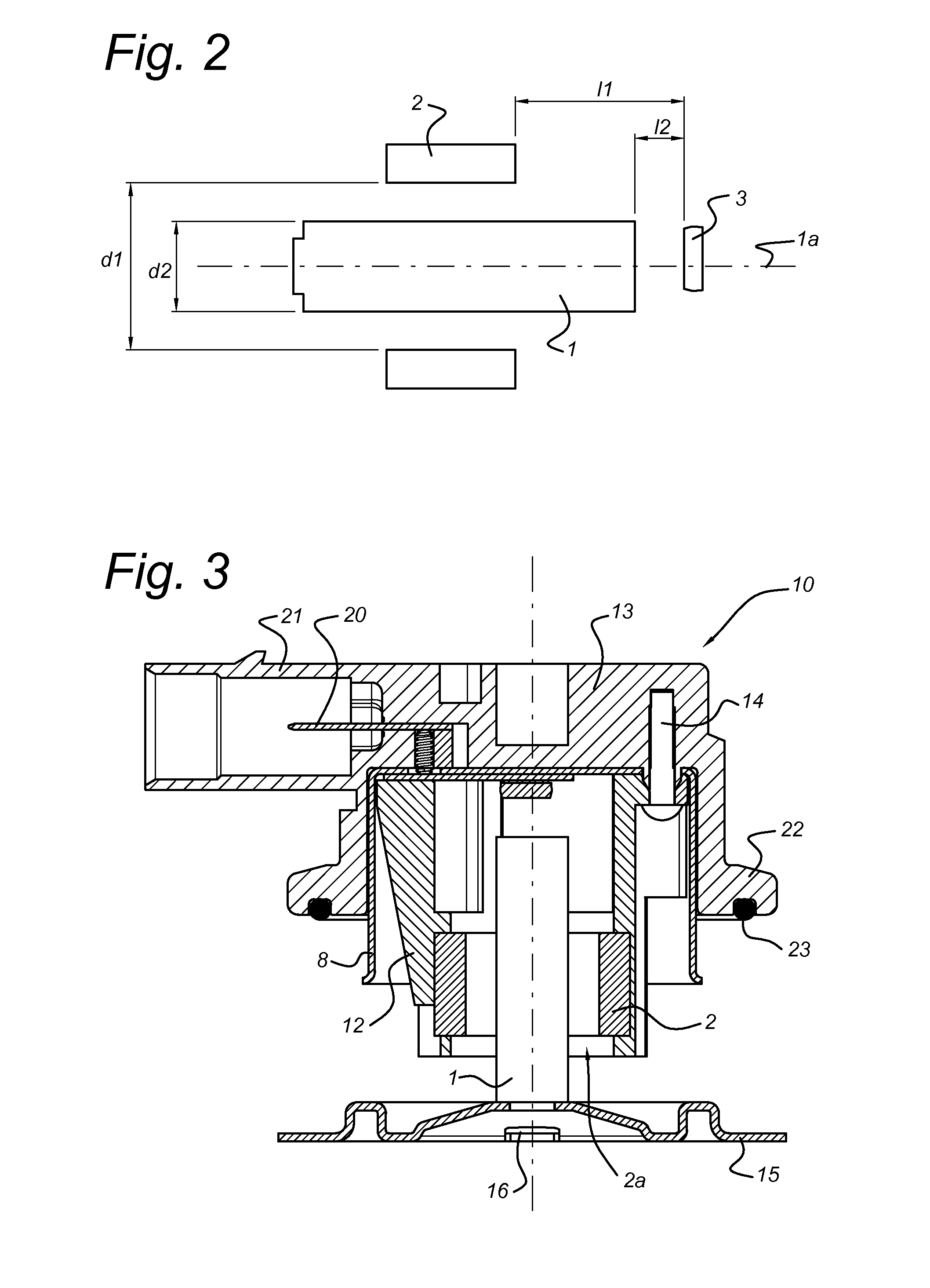Position sensor
a position sensor and sensor technology, applied in the field of position sensors, can solve the problems of reducing the useable life, high associated cost, and undesirable replacement or repair of such position sensors, and achieve the effect of reliable and easy manufacturing
- Summary
- Abstract
- Description
- Claims
- Application Information
AI Technical Summary
Benefits of technology
Problems solved by technology
Method used
Image
Examples
Embodiment Construction
[0017]Linear position sensors are widely used, e.g. also in combination with actuators, e.g. in automotive applications such as turbo chargers. Turbochargers increase the power output and fuel efficiency of various engine designs without increasing engine size and weight. Modern turbochargers are fitted with adjustable vanes inside the turbocharger, which are actuated using a single vacuum actuator.
[0018]Prior art position sensors used in turbochargers suffer from internal mechanical friction and wear between parts. The useable lifespan of these position sensors is normally increased by using expensive materials, such as PPS plastics with a high glass content (e.g. 40-45%), as these plastics reduce the effects of internal mechanical friction and wear between parts. Furthermore, these position sensors use a plurality of expensive magnets made from Neodymium to increase linearity and reliability, thereby increasing the number of components and manufacturing costs even more. Presently,...
PUM
 Login to View More
Login to View More Abstract
Description
Claims
Application Information
 Login to View More
Login to View More - R&D
- Intellectual Property
- Life Sciences
- Materials
- Tech Scout
- Unparalleled Data Quality
- Higher Quality Content
- 60% Fewer Hallucinations
Browse by: Latest US Patents, China's latest patents, Technical Efficacy Thesaurus, Application Domain, Technology Topic, Popular Technical Reports.
© 2025 PatSnap. All rights reserved.Legal|Privacy policy|Modern Slavery Act Transparency Statement|Sitemap|About US| Contact US: help@patsnap.com



